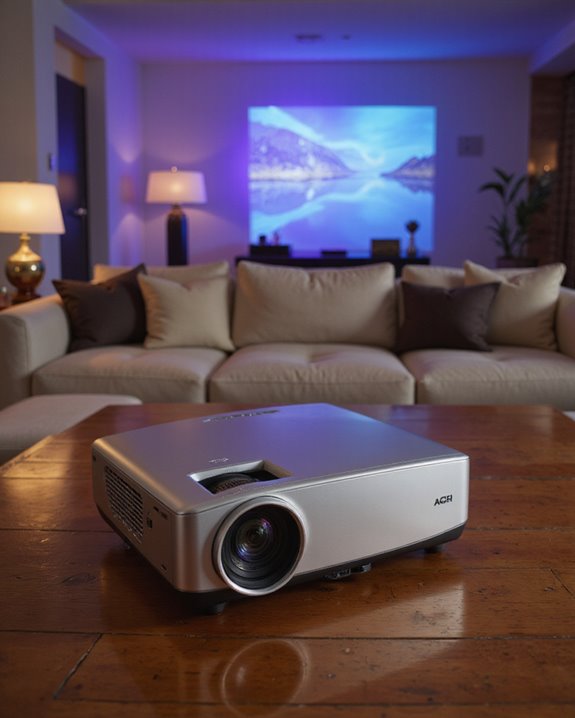A pico projector is a small, portable device—usually about 2 to 6 inches wide and less than a pound—designed to project images or videos onto flat surfaces. These projectors use DLP (Digital Light Processing) or LCoS (Liquid Crystal on Silicon) technologies, with long-lasting LED or laser light sources. Key features include built-in rechargeable batteries, HDMI and USB ports, and wireless capabilities. Pico projectors offer easy mobility, lower prices, and versatile use. Further details explain performance and evolving features.
Key Takeaways
- Pico projectors are compact, lightweight devices designed to project images or videos onto surfaces from your pocket or bag.
- They use miniaturized optical technology, typically DLP or LCoS, combined with long-lasting LED or laser light sources.
- Most models feature built-in batteries, multiple ports, and wireless options for easy, portable use with various devices.
- Pico projectors can display content in resolutions up to 1080p, with brightness ranging from 50 to 200 lumens.
- Common uses include business presentations, education, outdoor entertainment, and on-the-go media viewing anywhere.
Defining Pico Projectors: Size, Design, and Portability
A pico projector is a compact, portable device designed to project images or videos onto a flat surface. Historically, these projectors emerged as technology enabled shrinking traditional projectors into units as small as 2 to 6 inches in length and width, with thickness under 3 inches. Most models weigh less than a pound, prioritizing portability for travel or mobile presentations. Aesthetic design emphasizes minimalist, rectangular shapes with slightly rounded edges, allowing easy storage in bags or even pockets. Important features include:
- Built-in rechargeable batteries for cordless use.
- Multiple connectivity ports (mini-HDMI, USB, composite video).
- Low power consumption, often around 6 watts.
- Quiet operation, averaging about 30 decibels.
- Supporting a native resolution of up to 1080p ensures a true Full HD experience despite their small size.
Despite their size, pico projectors can display images up to 60 inches diagonally at HD or WVGA resolutions.
Core Technologies Behind Pico Projectors
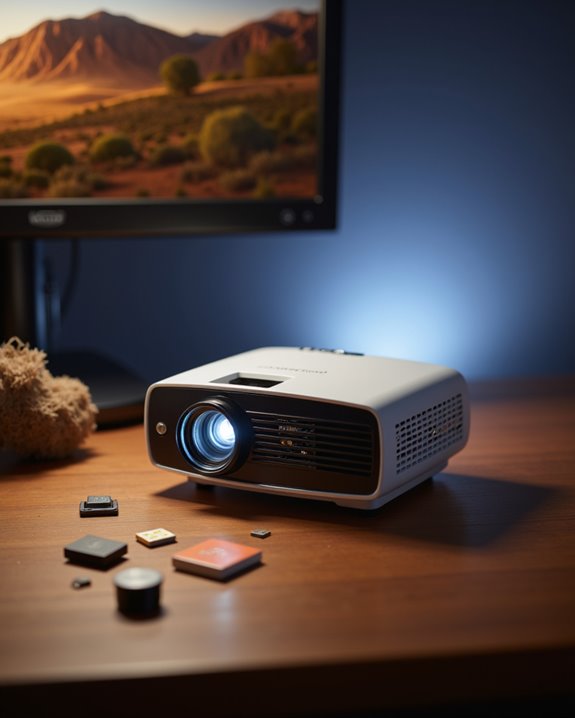
Pico projectors rely on several core technologies that enable their compact size and efficient image projection. The foundation is optical miniaturization, which uses tiny lenses and mirrors to focus light in tight spaces. Two main image platforms are DLP (Digital Light Processing), using thousands of tilting micromirrors for high contrast, and LCoS (Liquid Crystal on Silicon), employing liquid crystals for sharp, colorful images. Advanced light sources include LEDs, offering energy efficiency and lifespans up to 15,000 hours, and lasers, which provide brighter displays and richer colors. Key specifications commonly found are:
- Brightness: 50–200 lumens
- Contrast ratios: Above 1000:1
- Resolutions: Up to 1024×600 pixels
Additionally, innovations in light source technology have contributed to improved brightness and color reproduction in portable projectors. Integrated features like instant on/off, efficient thermal management, and compact inputs further support portable use.
Typical Use Cases for Pico Projectors
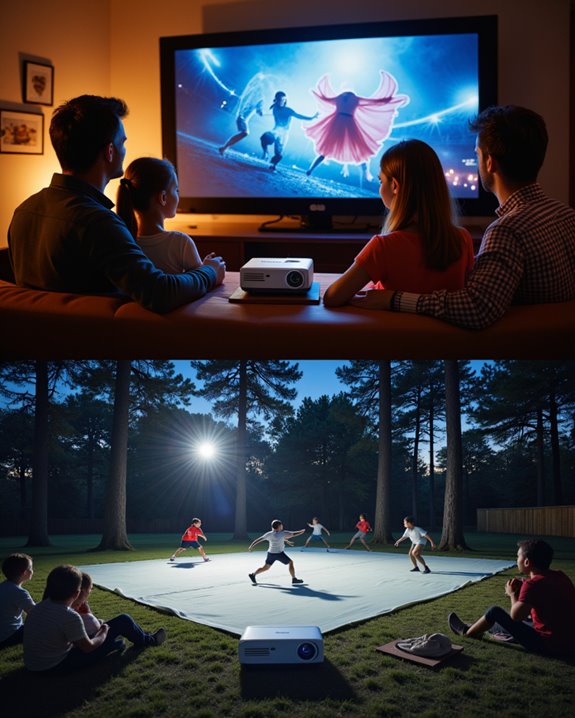
How do compact projectors fit into daily routines and professional settings? Pico projectors, or pocket-sized projectors, serve a wide range of applications due to their portability and convenience. In business, they are used for projecting presentations, sales pitches, and collaborative brainstorming during meetings, both in-office and remotely. For classroom integration, teachers use them to display videos, simulations, or interactive content, enhancing student engagement and enabling group activities on various surfaces. Additionally, their wireless connectivity capabilities allow for seamless streaming and device pairing, expanding their versatility in different environments. Pico projectors also support outdoor entertainment, providing a cinematic experience during backyard movie nights or events. In social gatherings, they display slideshows or event details, adapting easily to different locations. Additional uses include:
- Gaming, by projecting onto large surfaces
- Advertising, through dynamic storefront displays
- Workshops and training sessions, offering mobile visual aids
Their compact design enables flexible usage across multiple environments.
Image Quality: Brightness, Resolution, and Performance
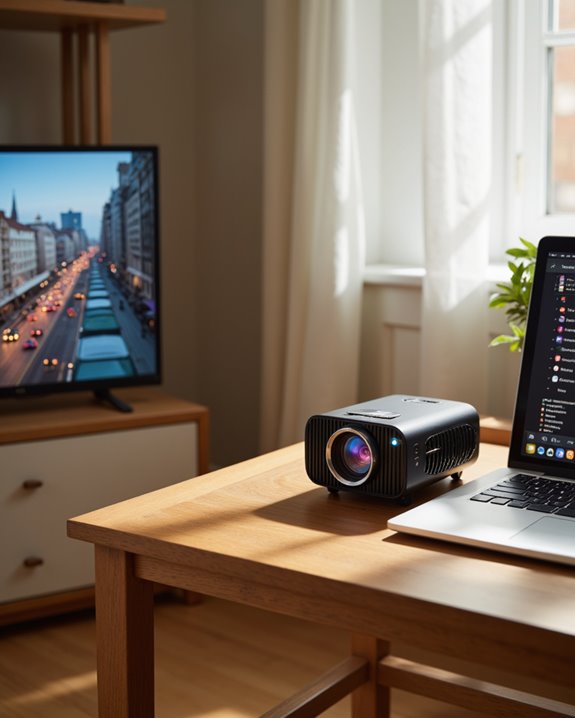
Image quality stands as a central factor when evaluating compact projectors, often called pico projectors. Brightness is measured in lumens; typical models range from 11 to 500 ANSI lumens. Higher brightness, such as 500 lumens, enables clear images in most lighting, while lower outputs require dark environments. Native resolution varies widely—qHD (960×540 pixels) to full HD (1920×1080 pixels)—directly affecting image sharpness on larger screens. Color accuracy is supported by 8-bit color processing, which provides acceptable but not professional-level color reproduction. Contrast ratios, typically 1000:1 to 3000:1, influence image depth and detail. LED lamp sources offer long life (15,000–30,000 hours) and efficient power consumption. Battery life depends on brightness: brighter images reduce runtime due to higher power needs.
Connectivity Options and Device Compatibility
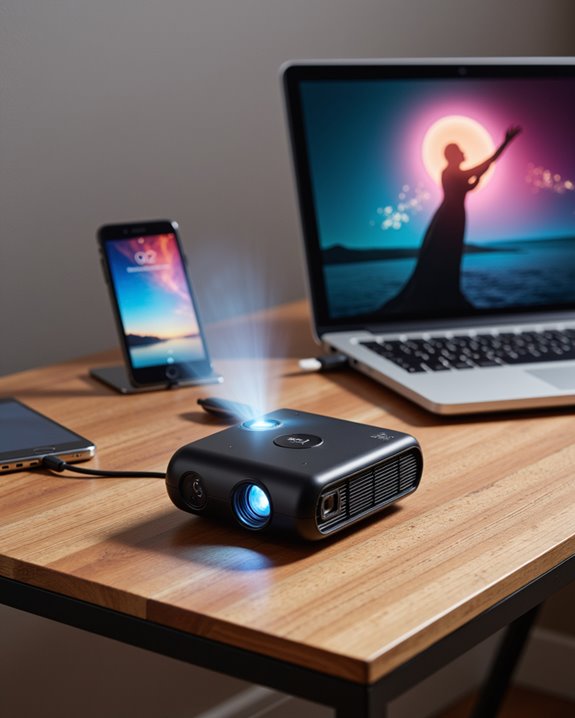
A wide range of connectivity options is essential for ensuring that compact projectors, often referred to as pico projectors, work smoothly with different devices. Most models include HDMI ports for connecting laptops, gaming consoles, and smartphones. USB and micro USB ports allow media playback from flash drives or external hard drives and sometimes support device charging. For wireless streaming, many pico projectors offer Wi-Fi for screen mirroring from smartphones, tablets, or computers, and Bluetooth for linking to external speakers or headphones.
Additional features include:
- Micro SD card slots for standalone media playback
- AV input and VGA connectors for legacy devices, such as VHS or older computers
- Audio-out ports and 3.5mm jacks for external audio
These varied options maximize device compatibility for presentations or entertainment.
Key Advantages of Pico Projectors
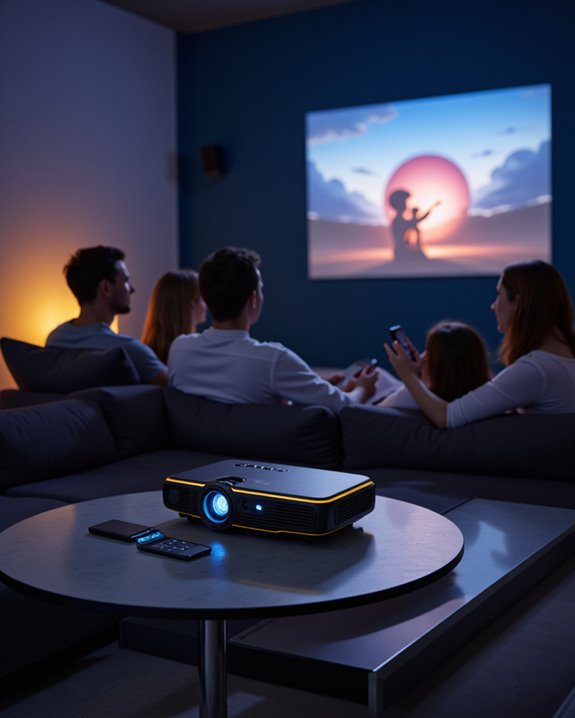
Pico projectors offer several notable advantages that set them apart from traditional projection devices. Their compact size and lightweight design allow users to easily carry them in a pocket, small bag, or even a desk drawer, making transportation and setup simple. Most models run on battery power, providing several hours of battery life and enabling use in locations without reliable access to electrical outlets. The user interface of pico projectors is typically straightforward, featuring intuitive menus and plug-and-play functionality, which means even novice users can operate them with minimal effort. Additional benefits include:
- Affordable entry-level pricing, often starting around $25
- Multimedia versatility, supporting videos, presentations, photos, and games
- Multiple connectivity options, such as HDMI, USB, Wi-Fi, and Bluetooth
These features enhance accessibility and convenience.
Limitations and Evolving Features in Pico Projection
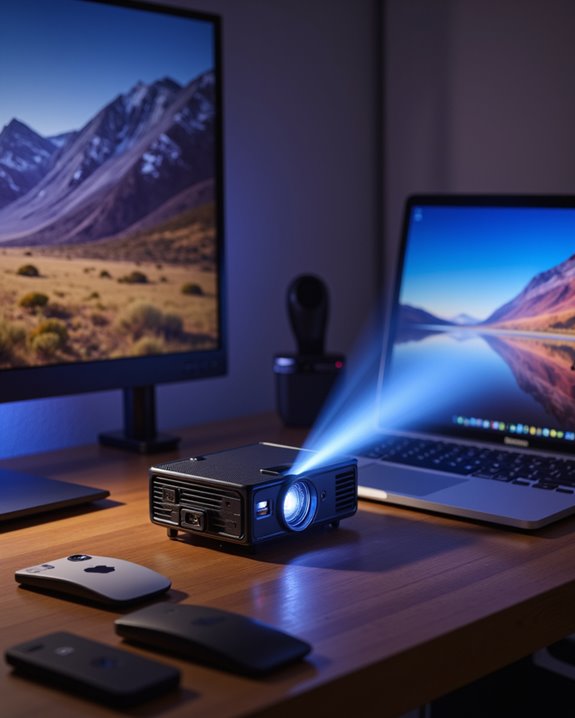
How do the physical and technical boundaries of ultra-compact projectors shape their everyday use? The primary limitations stem from low brightness—typically 100 to 200 lumens—making images hard to see in well-lit rooms. Most pico projectors offer 720p resolution, less sharp than full HD or 4K. As projection size increases, brightness drops and pixelation rises, reducing image quality beyond 20–50 inches. Battery life is restricted by small form factors, limiting use on a single charge. Mechanical durability, especially in folding hinges, varies and can impact long-term reliability. Other challenges include:
- Limited color accuracy compared to larger projectors
- Hinges often fixed at 90 degrees, restricting placement options
Newer models add features such as voice control, wireless connectivity, and integrated streaming apps to offset these hardware constraints.
Frequently Asked Questions
Are Pico Projectors Safe for Children to Use or View?
Like fireflies in a jar, child safety with projector brightness relies on careful handling. Proper supervision, avoidance of direct light exposure, and adherence to safety features help guarantee children can safely enjoy the gentle glow of pico projectors.
Can I Use a Pico Projector Outdoors During Daylight?
Outdoor brightness greatly affects daylight visibility when using a pico projector. Due to their low lumen output, images often appear washed out in sunlight. Shaded areas or high-gain screens can improve visibility, but limitations persist.
How Do I Clean and Maintain a Pico Projector?
Regular maintenance extends device lifespan by up to 40%. Cleaning lenses weekly with a microfiber cloth and ensuring dust prevention through monthly filter checks are essential. Users should always unplug the device and consult the manual before maintenance.
What Is the Typical Battery Life of a Pico Projector?
Typical battery duration for a pico projector ranges from 30 minutes to 3 hours, depending on power consumption and usage patterns. Lower brightness settings and minimal media playback can help extend battery life within this limited timeframe.
Do Pico Projectors Support 3D or VR Content?
Like a telegram from the future, the question of 3D compatibility and VR support in pico projectors reveals that most models lack native 3D capabilities and are unsuitable for VR, prioritizing portability over immersive multimedia experiences.

